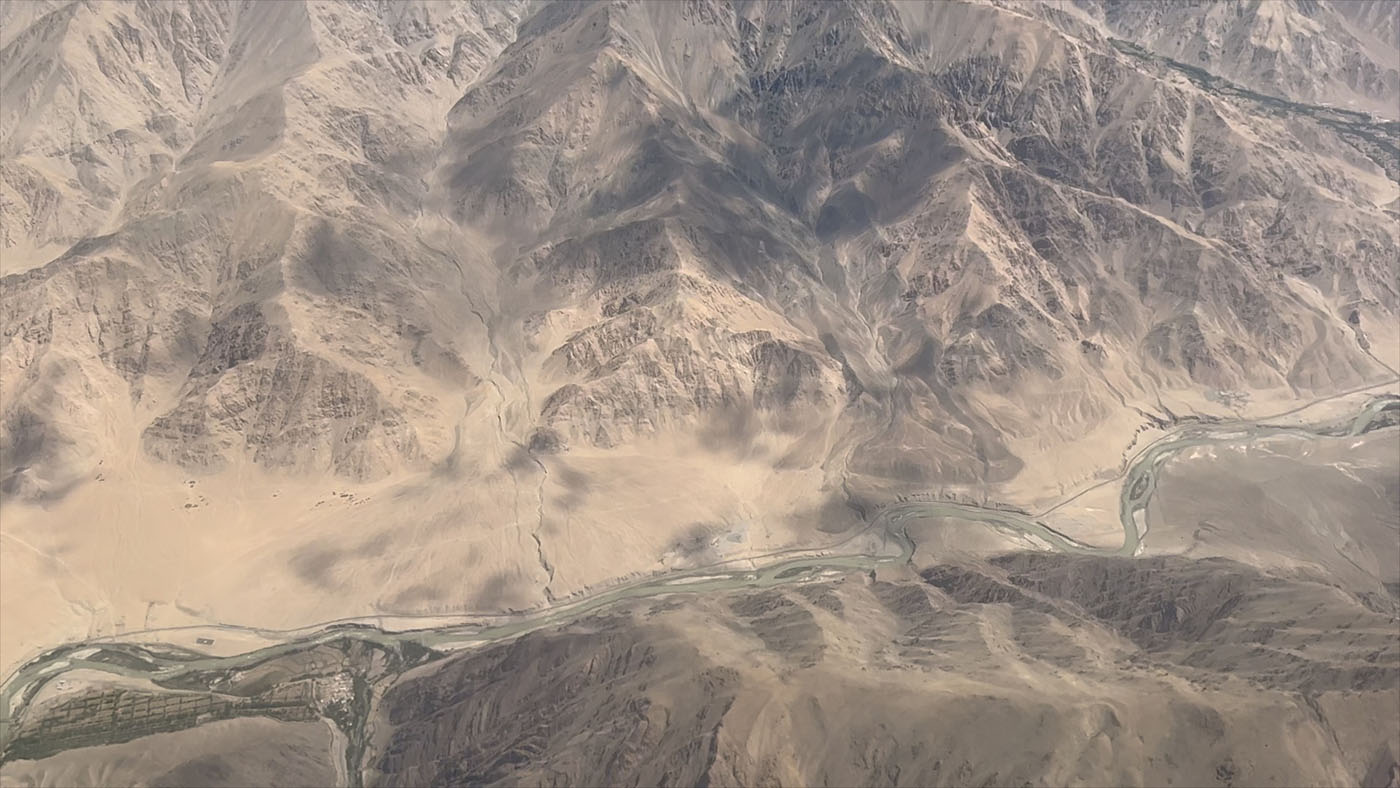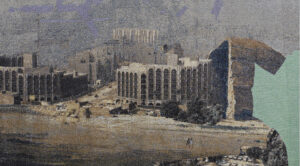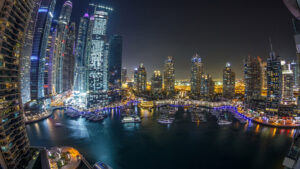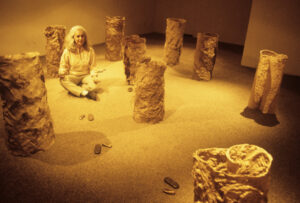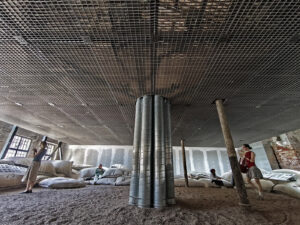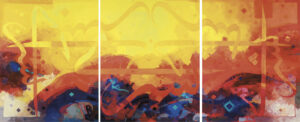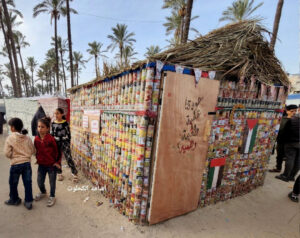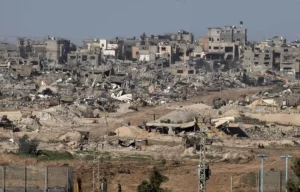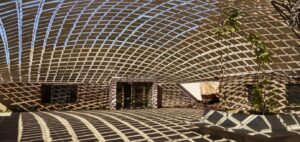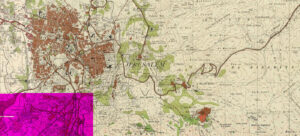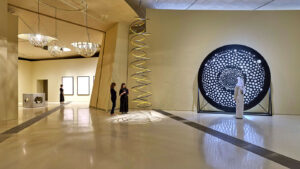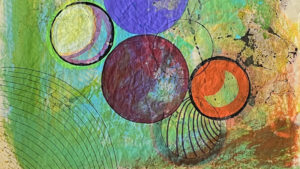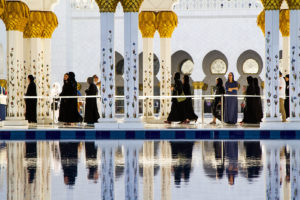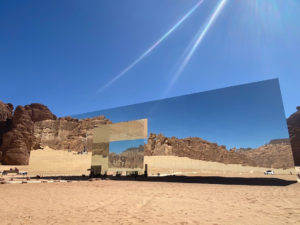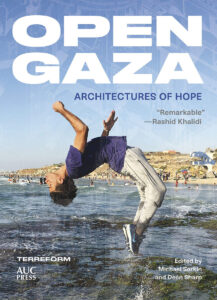Rabi Georges reviews and interviews Oorvi Sharma, whose work bridges the disciplines of architecture, policy design & visual arts. The article explores Oorvi’s highly technical & welcoming work, which engages with the climate crisis to deliver a critical message with sensitivity.
Rabi Georges
It is undeniable that architecture significantly affects climate change, whether through high energy usage or ecological interruption. According to the International Energy Agency, building new architectural structures, maintaining existing structures, and the overall energy consumption which keeps buildings operational accounts for 30% of global energy consumption and 26% of global energy-related emissions.[1] It is no secret that climate change has a disastrous impact on weather conditions and increases rapid glacier-melt, which results in rising sea levels. In turn, this affects and threatens existing networks of architecture and communities in coastal areas. The responsibility of architects increasingly demands creating resilient design strategies and working closely with communities, organizations, and governments to mitigate the impacts of rising seas.
In parallel to other major regions around the globe, Gulf countries are faced with the threat of erosion of major coastlines through rising sea levels and unpredictable weather patterns. At the end of 2023, the United Arab Emirates will host the 28th Conference of the Parties (COP 28) of the United Nations Framework Convention on Climate Change (UNFCCC). Consciousness of a growing climate crisis and ascending awareness for sustainability are increasing in the UAE’s public view.
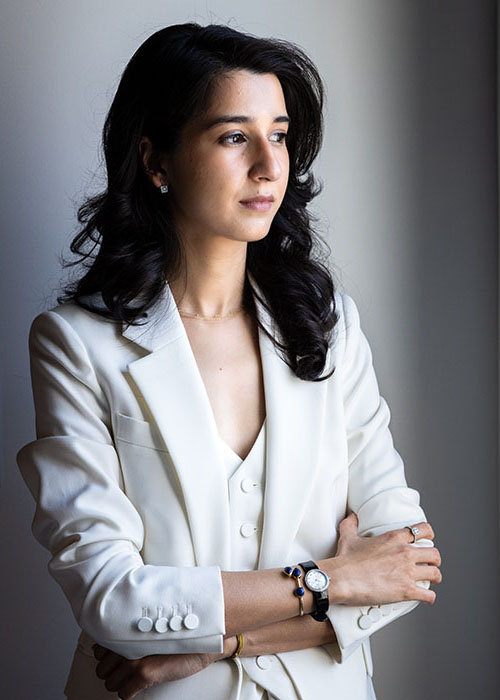
Oorvi Sharma, an architect who lives and works in Abu Dhabi, United Arab Emirates, focuses on the issues of climate change, global shifts and consequential displacement, and modern conservation movements under threat of climate crisis. Upon graduating from Harvard University’s Graduate School of Design with a master’s degree in architecture, she has worked in a wide international context, including metropolitan cities like Tokyo, Mumbai, and San Francisco. Her work is interdisciplinary and transcalar, with projects in confluence of architecture, design, artefacts, exhibitions, urban design, research, curation, and writing. Her writing about the built environment has been published in numerous periodicals, including Disegno Journal, Harvard GSD’s Platform, ICON Magazine, SVSA Life Magazine, and Elisava Barcelona School of Design and Engineering’s Temes de Disseny, among others. During her time at the Cultural Foundation Abu Dhabi Art Residency, Oorvi developed a range of projects aimed for publication and exhibitions that explored these important themes.
In her studio, Oorvi exhibited a range of multimedia works in the form of drawings, digital drawings, film, architectural models, and research papers. The creative thinking process and quality with which Oorvi translates her research into film, drawings and objects is noteworthy. Her work undeniably qualifies as a bridge between architecture, design and visual arts where her films and drawings are certainly to be considered artworks. While highly technical, her work also serves as an entry point, welcoming the general public to engage with the urgency of the climate crisis through inspiring visual aesthetics. In relation to her research, Oorvi considers the past and proposes possible futures, bringing to the forefront both the natural and built landscapes of Abu Dhabi city today.
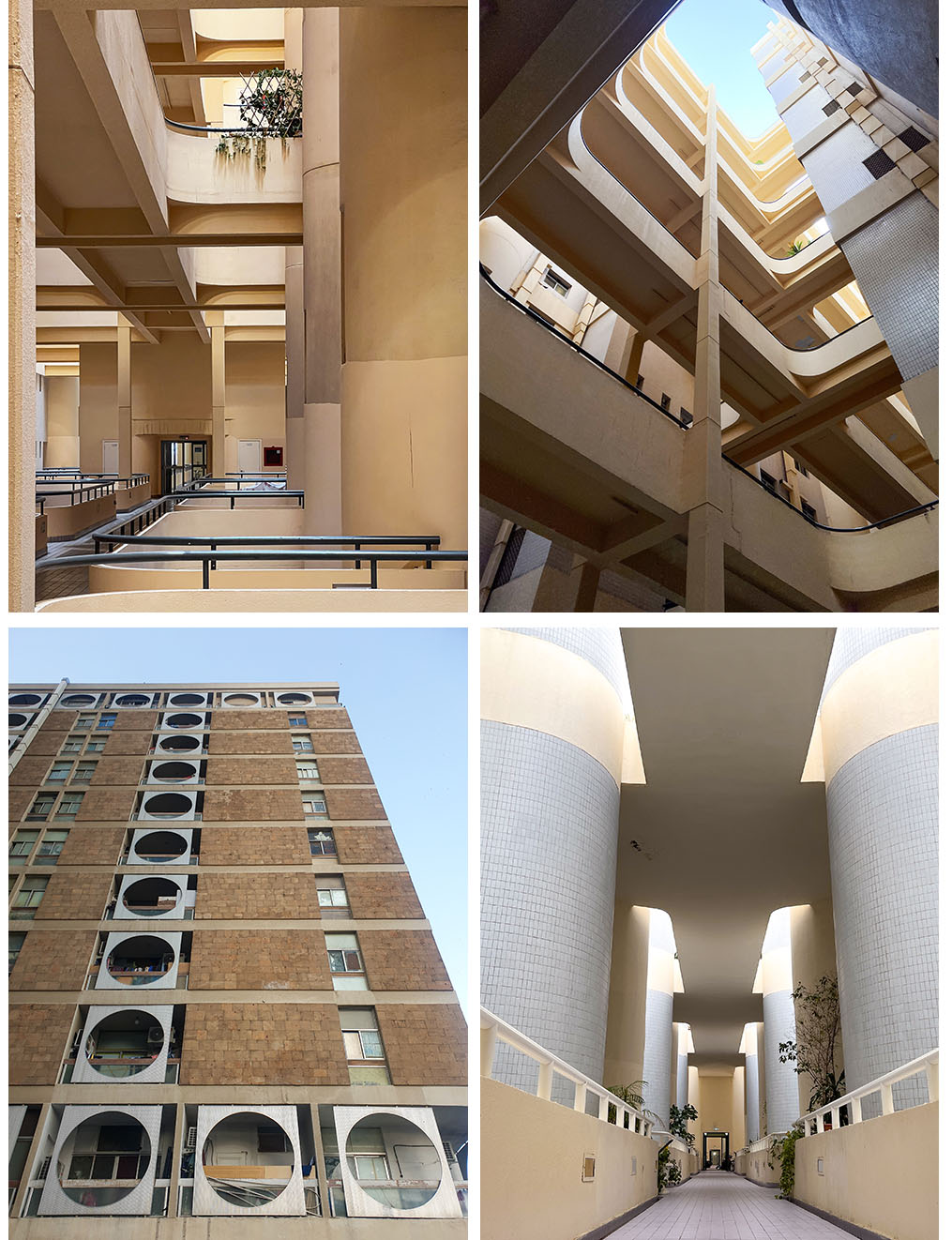
[These photographs document not only architectural structures, they are an abstract perspective of colors, shades and geometric forms.]
Her careful observation of Abu Dhabi’s modern heritage is best presented in her ongoing series of photographs which embrace aesthetic geometric details and the embedded passive technologies in Abu Dhabi’s rich architecture from the ‘60s to the ‘80s of the last century. These photographs constitute independent artworks while also fortifying her well-researched, forthcoming essay of indigenous modern vernacular in Abu Dhabi city. In alignment, this sharp-eyed observation continues in her film Proscenium Acts: Residential Lobbies in Abu Dhabi. The film documents the need for the identification and conservation of unique, ornamented lobbies characterizing the urban ground level in Abu Dhabi. Oorvi’s perspective encourages the viewer to perceive value in one’s own community, found within its everyday spaces, in an effort to resist demolition and new construction cycles. Manifesting as a universal message, both these works advocate strongly for the conservation of modern heritage beyond Abu Dhabi.
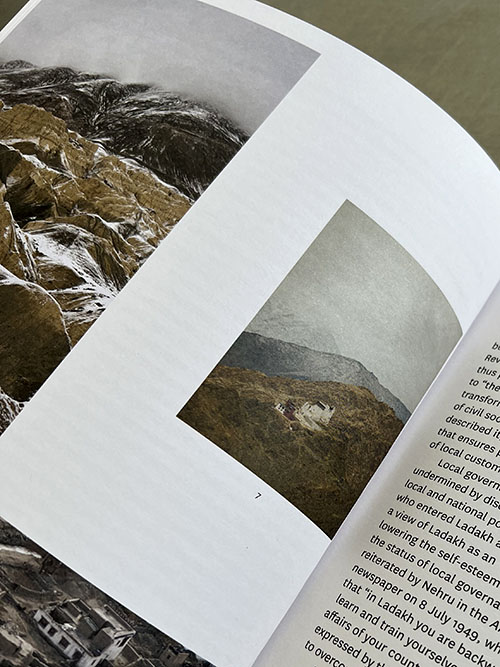
As part of a forthcoming exhibition and publication project about coastal landscapes and the immediate threat of rising sea levels to its communities, is her series of sensitively constructed drawings. These filigree and harmonious drawings show the sea level in relation to Abu Dhabi’s architecture and landscape infrastructures, as seen to be horizon-aligned on structured paper and off-white linen. These drawings place coastal edges at the center of debates about technologies and societies, in an effort to propose resilient coastal infrastructures and to restore and protect existing community threads. The drawings reveal in a subtle sense the threat that the rising sea level pose to the architectural landscape in the drawing and as a forecast to the very same existing architectural landscape. This representation of harmonic composition and the embedded critical message in the drawing results in a poetic ambiguity.
Ultimately, Oorvi’s projects connect to the same central theme of architectural responsibility and complicity in climate crises and the related displacement of communities. They serve as a critical message to better understand both the city’s and the community’s needs in order to value our recent historic past and advocate for a sensitively-considered, sustainable future.
Oorvi speaks to The Markaz Review about her approach with the intention of advocating for more regional architects to critically address contemporary challenges.
Interview: Responding to the Nexus of Cultural, Political, and Terrestrial Processes in Architecture
RABI GEORGES: Currently living in Abu Dhabi, where you also spent your early years, you’ve lived and worked in six countries over three continents: UAE, USA, UK, India, Canada and Japan. All your research and architectural projects have revealed social challenges which you have witnessed and observed first-hand. How does your experience having worked in those countries inspire and influence your current research and work in the UAE?
OORVI SHARMA: I have had the fortune of calling several cities home, and I am able to maintain my connection to them in both personal and professional capacities. My formal education in architecture inducted me into the diverse economic and social issues that color our cities. Early in my career, my projects focused on the promotion of inclusivity in the Indian context, where I learned to identify factors that originally caused exclusivity. In graduate school, I was drawn to questions of ecological and environmental justice within an international scope. In one instance, I explored land ownership of Kampung village structures in Malaysia that face the perils of purposeful dilapidation and redevelopment incurred by rapid urbanization. In another, I documented concealed oil extraction infrastructures in Los Angeles as well as the environmental racism and public health inequities inflicted by them. I was captivated by issues of legality and policy design that existed outside the realm of spatial experience, and I felt an urgency to expand the scope of my work beyond the perceived, traditional bounds of architecture. Empowered by my education and fundamentally changed by my experiences outside of it, I felt an urgency to expand the scope of my work as a designer to encompass advocacy for communities subject to unjust pressures.
I am drawn to problems that are created by flawed or insufficient policies incapable of adequately serving communities the world over. These interests have led me to study many forms of injustice, from insufficient housing in San Francisco, to extractive ecological regimes globally, and to narratives of social upheaval amidst rapid redevelopment and urbanization in a range of South Asian contexts. Throughout my work, I have engaged a spectrum of stakeholders, from non-profit organizations to large academic institutions, and to multinational corporations. I have witnessed creative proposals suffer because they failed to engage holistic strategies that would have bolstered their long-term potential. It is my sincere conviction that the 21st century requires more transdisciplinary thinkers in order to holistically confront our most pressing social and ecological dilemmas.
I bring this ethic to my projects in Abu Dhabi through an eponymous studio where I am concurrently working on publishing and practicing within a focus on projective planning for coastscapes in the wider WANASA region whilst I am also researching a repertoire of architecture from the Islamic world over time. Core to these projects is their elemental, formal manifestation. However, more importantly, their grounding as socio-political influencers is what make these projects resonant in a long arch of time and for a range of publics.
RG: Moreover, aspects of your personal story are interwoven in your works, giving your research a vibrance, honesty and life. Can you give us give us an example, where it is evident that your motivation is rooted in your own experience?
OORVI SHARMA: My approach to developing localized solutions despite maintaining a practice spanning different contexts comes from an ethic of working in a hyperlocal manner for places that I am connected to either through my ancestry or through my path — places whose soil and society with which I’m extremely familiar and remain connected to. To explain this paradigm further, you can consider the following. In early 2020, I was planning ecologically resilient projects with other designers in Ladakh, India, only a few miles from where my grandparents migrated during the India-Pakistan partition. The local villages there have been built with soil sourced and fabricated on-site; our projects sought symbiosis between that native knowledge and the requirements of modern, urban infrastructure. However, the efficacy of our projects depended less on physical materials than on guidance by indigenous customs and protection from local laws. These kinds of projects confirm that my most meaningful role in architecture is at the confluence of design and policy, where holistic spatial solutions to contemporary challenges are envisioned primarily through a grounding in legal, societal, and a research-based approach. This interdisciplinary depth and commitment to locale-specificity is central to my work.
RG: You stated that your work grapples with the effects of contemporary socio-political shifts, and the conservation of ecological health. A recurring theme in your work is the global crisis of climate change. What is the role of architecture in the threat of climate change?
OORVI SHARMA:
It is not only necessary for designers to recognize and document the ecological consequences of their cause, but also to rethink their roles in this context. Such an acknowledgement requires, among others, understanding the resources embodied in the making of buildings and landscapes, exploring the abandonment of indigenous construction techniques, and critically questioning the forces of finance capitalism that ultimately impact each of these causes.
Modern spatial tectonics and structural spans achieved through industrial material scale, exchange scopes, and construction processes distract from an understanding that, at any scale, the production of architecture involves haptic, human experiences that go beyond Western imitations, single-use utility, and zero-sum exchange. In light of this, the active process of producing built environments begs for a reintegration of local craft and knowledge through interdisciplinary collaboration, and also for a renegotiation within development-dialogues of place-first approaches.
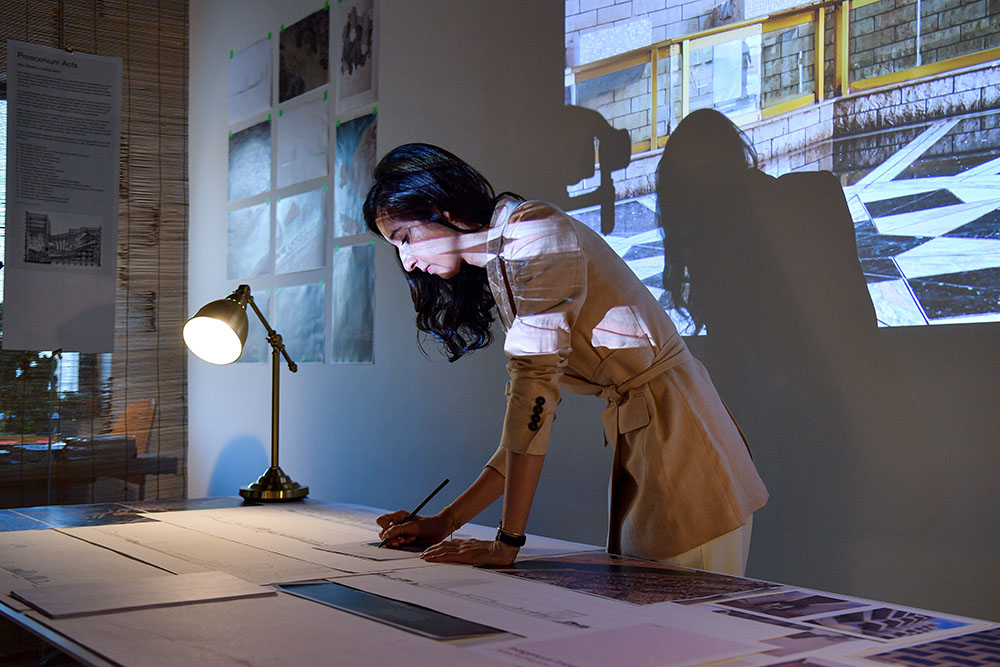
Within this scenario, how might it be encouraged for architects to reconcile their roles and the discipline with a greater domain of practice to include contemporary societal and planetary needs? As we proceed into a new era of anthropological revolution, the need to advocate for the reorganization of existing paradigms and techniques to shape our environment and settlements — namely architecture — is inevitable. To answer this question, it is important to recognize that, in this age, the role of the architect must be supplemented by that of an interdisciplinary researcher. To address the needs of the planet today through the discipline of architecture requires that architects have an important role in advocating for processes, materials, laws, and regulations capable of addressing uneven power systems and easing the effects of climate change.
As such, there is a need to work, through buildings and scholarship, to support people and communities in living sustainably and supporting ecological health. Thus, the cumulative effect of an interdisciplinary, multi-contextual approach of an independent practice can successfully drive policy and solutions in the form of buildings, laws, regulations, and scholarship in the direction of positive environmental impact.
RG: With the upcoming COP28 in the United Arab Emirates, what are some specific observations about the region’s architecture and environment that you feel require addressing? And how do these relate to the impetus of your forthcoming publication, where you respond to the evolving challenges of rising sea levels?
OORVI SHARMA:
The landscapes and cities of the Arabian Gulf region require honed lexicons of technologies and typologies applicable to their unique contexts to solve problems that encompass global meteorological, socio-economic, and natural conditions and policies. More specifically, in Abu Dhabi, a culturally and environmentally-sensitive model for nation-building is underway as the city matures, characterized by a palpable mission for progressive collaboration, workforce safety and upliftment, climate change response, and post-hydrocarbon futures. The city’s in-charge institutions have fundamentally adopted an ethic to uplift the existing built fabric for the purpose of establishing a web of relations and dependencies that make the best use of space, de-stratify existing social divisions, and recognize the importance of respecting the finite nature of available ecological resources.
These national efforts propel Abu Dhabi to embrace an evolved culture, attitudes, and conversations that support natural landscapes, setting in motion critical regional transformations with indigenous, vernacular sensitivity at the forefront. For this, in addition, proposals of speculative visions for climate change-riddled contexts and resource precarity-related issues serve as key strategic tools to outline change and support fueled discussions with the city, local conservation sections, environmental departments, and the overarching institutions managing culture and landscapes.
In light of this salient framework, my project identifies key issues and aims to find solutions by building a repertoire of existing dialogues of coastal urban design and architectural discourse in the Middle Eastern, South Asian, and North African geographies. As I work further, the project’s impetus and manifestation is unique in a scenario where otherwise, coastscape projects are characterized by conversation that is packed with thick comparative statistics, design and research as disciplinary silos at the cost of civilian livelihoods; prefers mimicked-solutions while largely forfeiting views of the world of indigenous practices as an essential repertoire; and underperforms given the pace of accelerating aquatic uncertainties and increased exposure to flooding risk that constantly creates new landscapes of motion.
On a global scale, there is a need for localized solutions that take into account questions of sustainability, culture, and public health through place-specificity and ownership as advised by nuanced, evolved indigenous technologies. Looking beyond the adoption of West-centric solutions, there is a need to strategize on how the disparate regions on the planet are developed or address requisite resiliency in response to the effects of climate change.



